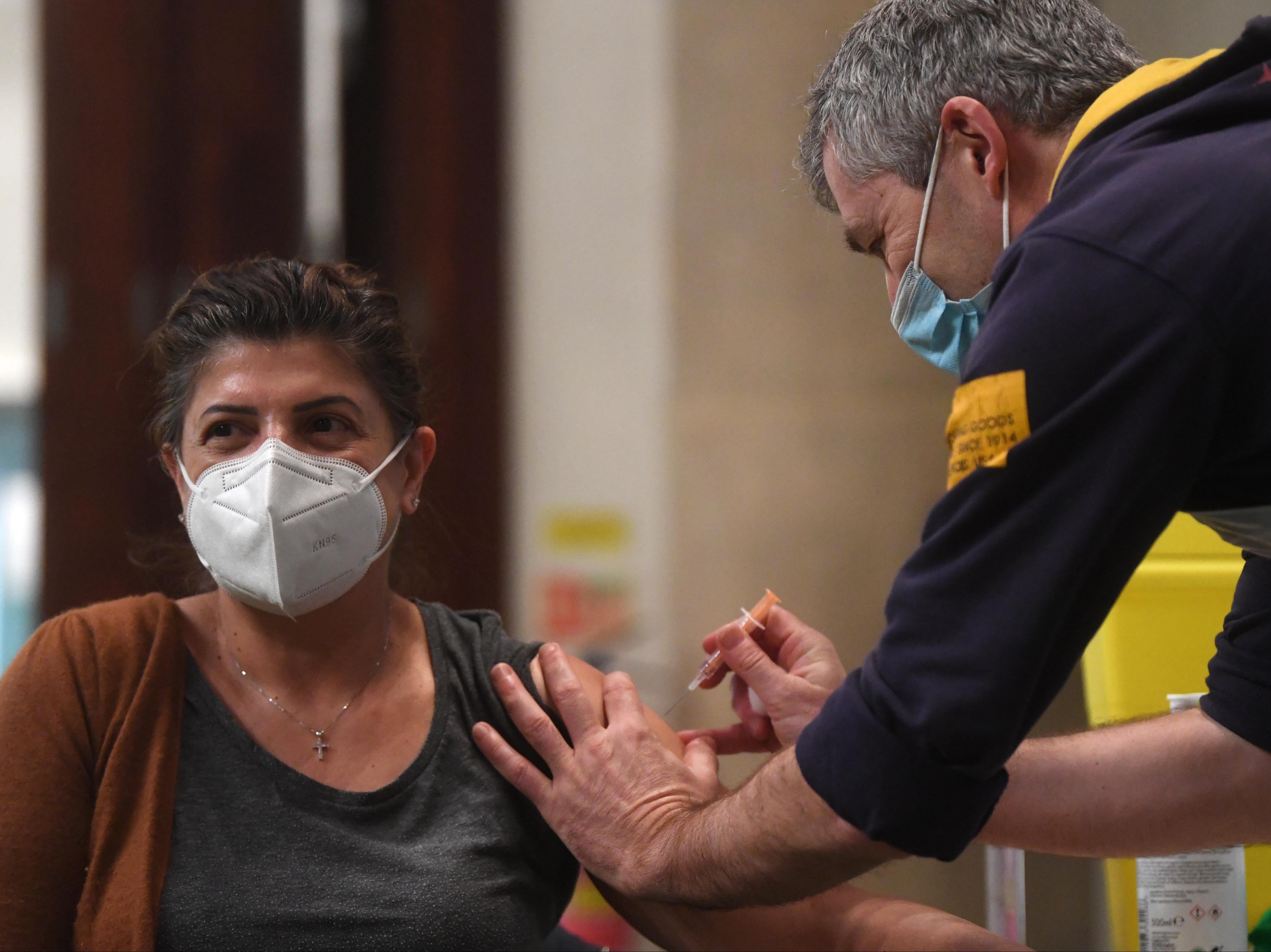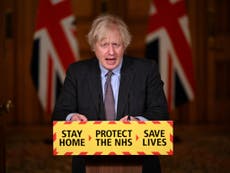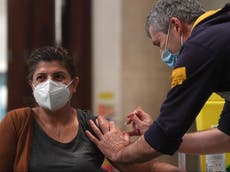When it comes to vaccinating the general population, I wonder how well Johnson’s ‘roadmap’ will play out?
Putting the virus back in its box requires people at (much) less risk taking up vaccination offers when they are made


Your support helps us to tell the story
From reproductive rights to climate change to Big Tech, The Independent is on the ground when the story is developing. Whether it's investigating the financials of Elon Musk's pro-Trump PAC or producing our latest documentary, 'The A Word', which shines a light on the American women fighting for reproductive rights, we know how important it is to parse out the facts from the messaging.
At such a critical moment in US history, we need reporters on the ground. Your donation allows us to keep sending journalists to speak to both sides of the story.
The Independent is trusted by Americans across the entire political spectrum. And unlike many other quality news outlets, we choose not to lock Americans out of our reporting and analysis with paywalls. We believe quality journalism should be available to everyone, paid for by those who can afford it.
Your support makes all the difference.The (hopefully) temporary slowdown of the UK’s Covid vaccination programme over the past couple of weeks isn’t solely down to issues of supply, which were bound to rear up at some point. The exercise has also, in some ways, been the victim of its own success.
At the outset, the Department of Health and Social Care assumed take up of 75 per cent “based on previous vaccination programmes”. In fact, per its figures, more than 90 per cent of care home residents and over-75-year-olds in England had received a first dose of the vaccine as of February 13.
In Scotland, which has enjoyed similar success, the first minister Nicola Sturgeon noted that “the higher than expected uptake so far” north of the border meant there was a need to reserve stock, “so that second doses can be offered to people who received their first dose in December”.
Of course. An unexpectedly high number of people taking up vaccines means an unexpectedly high number of people needing a second dose within the 12-week window. The problem will inevitably be exacerbated by bumpy supply. This is maybe less a cause for concern than it is for celebration. The multi-billion pound economic question, however, is whether it can be maintained.
Those in high risk groups – the elderly and people with medical conditions such as myself who are now getting jabbed – are mostly well aware of the risks the virus poses to them (or they certainly should be). The news coverage has been like a battering ram. The testimony of medical staff working on Covid wards, and bereaved family members, has been particularly evocative.
You could hardly fail to get the message. A trip to Tesco, even a near empty Tesco on a Monday morning to pick up medication, is a lot less scary when you’ve had the shot, believe me. But if people in at risk groups are well aware of what the virus could do to them, it’s likely also true that people at lower risk from it are similarly cognisant of the fact that their chance of getting seriously sick, while real, is probably quite low.
Health secretary Matt Hancock has said he expects the number of vaccinations to pick up in March, and the government hopes everybody over 50 will have been offered a first shot shortly after Easter in England, with the same true of Scotland. There have also been positive reports out of Wales and Northern Ireland.
The aim is for all adults to have been offered a jab by the end of July; by which time it is also hoped we will be able to enjoy something approaching “normal life”, under Boris Johnson’s much ballyhooed reopening roadmap.
Unusually, the Prime Minister put caution ahead of optimism when he unveiled it, with four separate tests required to be met at each stage, one of which is the continued success of the vaccination programme, another the vaccine proving effective in reducing hospitalisations.
I’ve seen people doing calculations with percentages in recent days – and then worrying. It goes something like this: “xx per cent vaccine effectiveness, times xx per cent of the population covered, gives xx per cent protection”, so is this really going to work?
Those calculations are probably best taken with a pinch of salt, because they’re all a bit hypothetical; and based on a lot of unknowns. What we do know is that the more people who have their shot, the better the outcome will be; because to be truly effective, vaccines need to achieve mass take-up. Putting the virus back in its box requires people at (much) less risk taking up vaccination offers when they are made.
Yet a couple of conversations I’ve had in the last couple of days have given me cause for concern: in one of them, a contact described an exchange with a friend of theirs who said they weren’t going to bother getting the vaccine because, “I’ve had the virus”. Don’t even get me started on how wrong-headed that is.
Another, who’d just booked their jab, wondered how much impact the entirely fake MMR scare – promulgated by former doctor-turned-high-priest of the anti-vax “movement”, Andrew Wakefield – might have on millennials, whose parents were reluctant to vaccinate them.
I accept these anecdotes are no substitute for hard data, and my worries may prove unfounded; if government messaging is sufficiently strong, and most younger people opt for the jab out of a sense of civic duty – which is strong at the moment. Concern for their grandparents, and the realisation that their jobs may very well depend on mass take-up, may persuade even the reluctant members of Gen Y and Gen Z.
But I still think there is work to be done – in addition to the continuing efforts that need to be made to persuade minorities and lower socioeconomic groups to take up the offer. Both face an elevated risk from the virus, but have recorded lower levels of take up when compared to the population at large. Johnson’s ‘roadmap’ needs to keep travelling, and then some.



Join our commenting forum
Join thought-provoking conversations, follow other Independent readers and see their replies
Comments